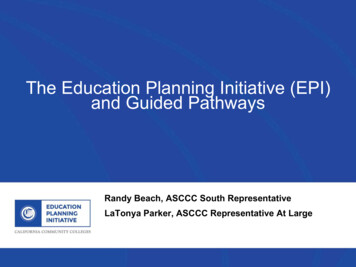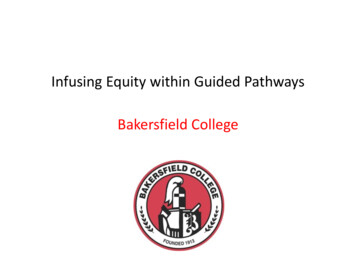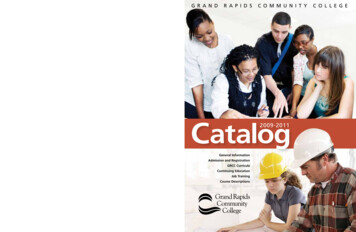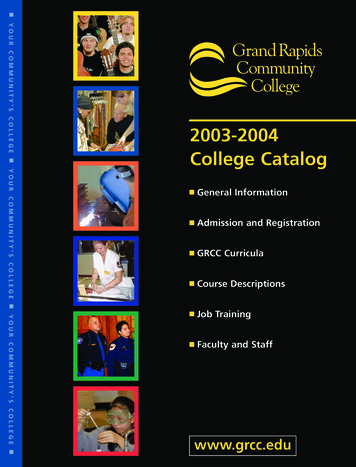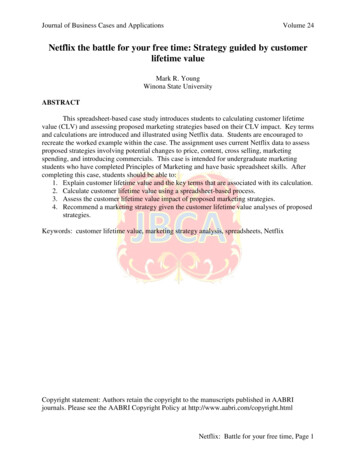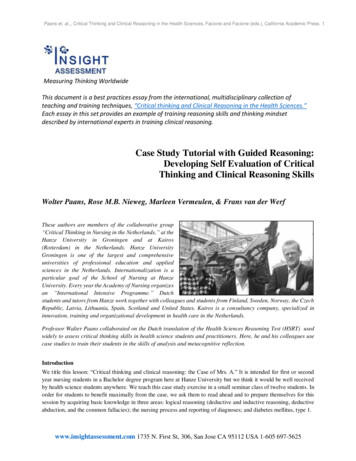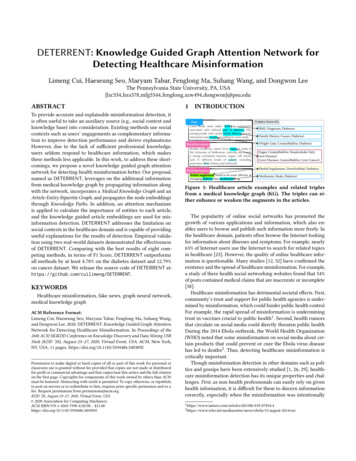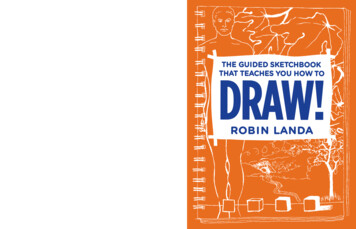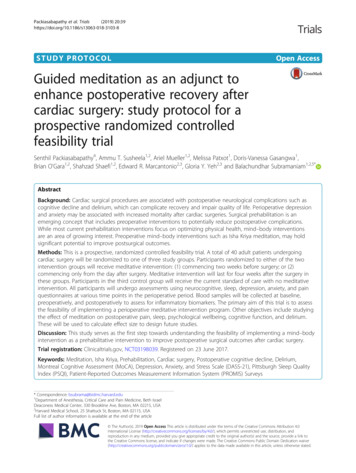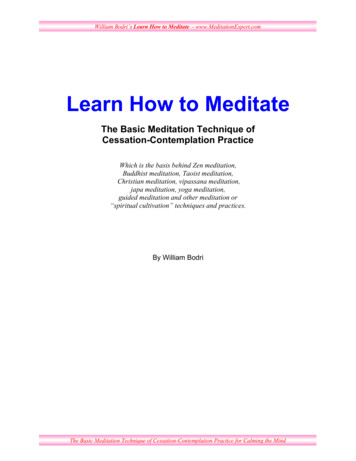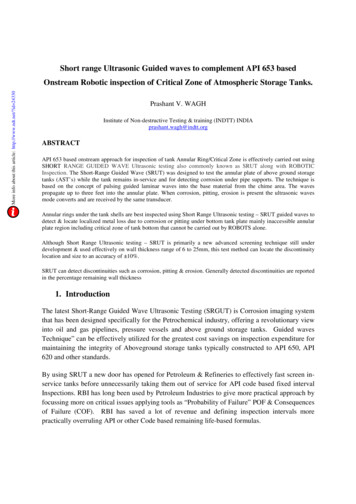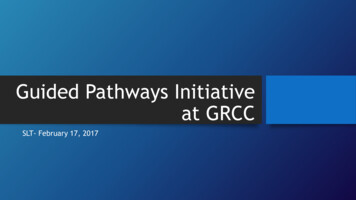
Transcription
Guided Pathways Initiativeat GRCCSLT- February 17, 2017
Guided Pathways Team:Curriculum And Advising Dillon Carr (Social Science)Vikki Cooper (English)Katie Daniels (IS)Bill Faber (Phy. Science)Sheila Jones (IS)Rosario-Montes Sutton (SS&RT) Pam Miller (SWD)Deborah Nordman (Rad. Tech.)Michael Vargo (SAS)Matheta Righa (Business)Matthew Mekkes (OTA)Patrick Kamau (SS&RT)
Guided Pathways Team:Logistic and Communications Vicki Maxa (SS&RT)Valerie Butterfield (Records)Leah Nixon (Communications)Amanda Kruzona (Records) Donna Kragt (IRP)Eric Mullen (SA)Michael Passer (IT)Raynard Ross (SS&RT)
Brief History of Guided PathwaysProducing Promising Results The first major initiative to address community colleges’ low completion rates was Achieving the Dream:Community Colleges Count (2004). In the late 2000s, research by CCRC and others established that the community college environment was toocomplex and confusing for students. In 2011, the Completion by Design initiative began and promoted the following ideas: Accelerate entry into programs of study Lesson time required to get college-ready Ensure that students know the requirements to succeed Contextualize instruction Integrate student support with instruction Monitor student progress and provide feedback Reward behaviors that contribute to completion Use technology to improve learning and program grams/pathways/Pages/ProjectInformation.aspx
What is the Guided Pathways Initiative?The principles behind the Guided Pathways model are that: Programs and services align with student end goals. Choices are simplified through program maps and academicplan default options. Students are supported with advising throughout tachments/What-We-Know-Guided-Pathways.pdf
Cafeteria ModelGuided Pathways Undecided students explore manyoptions. Students enter exploratory majors andchoose programs on a timeline. Learning outcomes are focused oncourses, not programs. Faculty collaborate to define and assesslearning outcomes for programs. Course schedules are unpredictable. Scheduling is focused on courses thatstudents need to progress. Assessment is used to placestudents into remedial or collegelevel courses. Assessment is used to determine areaswhere support is needed. Student progress is not monitored,and there is limited feedback. Communication between advisorsand academic departments is poorand advice can be in conflict. Student progress is monitored andfeedback is frequent. Advisors work closely with faculty, witha clear division of labor for monitoringstudent progress.
First-Time Student Experience
Momentum Pays for CC Students Early Momentum Credit Accumulation Gateway Classes Program of Study
GRCC Facts: Three out of every four students who enroll in a class leave that classearning a grade of C- or higher. In recent years, almost 3 out of every 4 students attending GRCC forthe fall semester return for the winter semester, but only 55-58%return for the following fall semester. Around 15% of GRCC students graduate within 3 years. Another 24% ofstudents transfer within 3 years. Graduation yields have recently been in the 7-9% .pdf
Completion Matters The goal of the program is completion and we want our students to leave with a complete set of skills forwork or transfer. Less excess credits - better use of FA - federal regulations Students with associates degrees have greater earning power than those with only some college or a highschool diploma.* Students who transfer with an associate’s degree (71%) are more likely to graduate with a bachelor’sdegree in 4 years than those who transfer without a degree (55%). Persistence rates are 79 versus 68%.** Graduation rates are a measure of the value students place on our programs as a whole. If students remain at GRCC to graduate, all courses and programs benefit. Outcomes based funding is coming, and the value of GRCC will in part be measured by the number ofassociates degrees earned.http://www.bls.gov/emp/ep chart mpliance/student outcomes update.pdf
GRCC GPI PurposeTo design a framework that brings together currentinitiatives at GRCC that support student success and tounite these initiatives toward the goal of helping studentsselect, persist in, and successfully complete an academicprogram in a minimal amount of time.
GP Goals at GRCC Review processes to ensure support of student needs from intake to completion Develop Pathways that align with student goals of gainful employment and/or further education Align curriculum with the designated Pathways Align developmental education and ease the movement of students into well planned programsof study Design course schedules so that students with a variety of needs can complete their programin a timely manner Ensure that students are provided feedback and support as they move through their chosenprogram so that they understand the requirements for success Identify indicators of success and implement assessment processes that measure the degree towhich proposed outcomes were met
Current GRCC Initiatives that Support the GPIInterest BasedGroup ctContextualizedCLS 100Career CoachSimplifiedApplicationProcessChanges to SWDSecondaryAdmission h andAssigned AdvisorsIntegrated Reading andWriting Dev. Ed. CoursesImproved sors Serving asDepartmentalLiaisons
Principles for Pathways GRCC academic programs will be aligned with a Pathway For students who do not select an academic program, their PathwayDegree will lead to an AA degree Students will be encouraged to select an academic program or workwith an advisor to develop an individual plan of study.
GRCC Pathways Health and Exercise SciencesHuman Services, Education, and Social SciencesHumanities, English, Language, and Communication StudiesMusic and TheatreArt, Architecture, and Mechanical DesignMath, Science, and EngineeringManufacturing and Applied TechnologyComputer Information SystemsCulinary Arts, Hospitality, and BrewingBusiness
Sample Academic Pathway DescriptionThe Health and Exercise Sciences Pathway is an option for energetic students whohave good interpersonal skills, enjoy science, and care about the well-being ofothers. Academic programs in this pathway can lead to professions likeoccupational therapy assistant, nurse, dental hygienist or assistant, and radiologictechnologist as well as provide preparation for transfer into programs related toexercise science and health professions such as physician assistant and occupationaland physical therapist. Note that students interested in professional programs likepre-med, pre-dental, pre-vet, and pharmacy should select the Math, Science, andEngineering Pathway.
Sample Pathway Alignment withCurrent Academic ProgramsArt, Architecture, and Mechanical Design PathwayCareer905 Architectural Design925 Architectural Technology122 Interior Decorating & Design928 Mechanical Design, Cert904 Mechanical DesignCareer Transfer610 Arch Tech-FSU-Fac aster Arch-LawrencePre-PhotographyFine ArtsPathway Degree
New Academic Programs Under Developmentfor Fall 2017 Anthropology Allied Health Communication Studies Engineering Biology Gender and Women’s Studies English Language andLiterature International Relations Hospitality and Tourism Management Writing
Pathways Curriculum Guidelines Results in the student’s ability to earn an Associate of Arts degree Results in the student’s ability to apply for MTA Includes two semesters of identified coursework Coursework is aligned to the programs in the Pathway and includes/prioritizes commoncourses found in the programs First semester will be as common or built using a common philosophy in case students switchpathways: EN 101, a math course; gateway course that introduces field (when possible);courses that have high success rates; courses have to be able to be paired withdevelopmental education courses Courses that are highly transferable were prioritized Accounts for course and program pre-requisites Includes a variety of courses that are “well-balanced” to facilitate student success
Business Academic Pathway CurriculumPRIORITY 1PRIORITY 3 EN 101 College Writing (3) BA 103 Intro to Business (4) Math General Education Elective (4) BA 270 Marketing (3) BA 207 Business Law 1 (3) Humanities General Education Elective Social Science General Education Elective Lab/Non-Lab Science General Education Elective Lab Science General Education ElectivePRIORITY 2PRIORITY 4 EN 102 (3) or COM 131 (3) or COM 135 (3) Humanities General Education Elective (3) EC 251 Principles of Macro Economics (3) or Social Science Elective (3) BA 256 Principles of Accounting 1 (4) BA 283 Business Management (3)Open Electives - To be selected with the help of anadvisor based on transfer program requirements
Guidance for Students with AcademicFoundations Placements-Catalog If you are required to take CLS 100 or PY 100, you should take it in your first semester at GRCC. You should select your math course based on your ALEKS placement score and the AcademicPathway requirement. If you are placed into an IRW course, you should complete it your first semester at GRCC. If you are required to take IRW 097, you are able to select from COM 131, MUS 112, MUS 115,MUS 120, MUS 121, MUS 134, MUS 151, MUS 173, MUS 174, MUS 189, MUS 194, MUS 196, MUS 198,TH 245, or TH 248. If you are required to take IRW 098, you are able to select from COM 131, MUS 111, MUS 112,MUS 115, MUS 120, MUS121, MUS 130, MUS 134, MUS 151, MUS 173, MUS 174, MUS 189, MUS 194,MUS 196, MUS 198, TH 245, or TH 248. If you are required to take IRW 099/EN 101, you are able to select from COM 131, MUS 105, MUS111, MUS 112, MUS 113,MUS 115, MUS 120, MUS 121, MUS 130, MUS 134, MUS 151, MUS 173, MUS174, MUS 189, MUS 194, MUS 196, MUS 198, TH 245, or TH 248 .
Proposed Pathways ModelStudent InteractionApplication Students select Pathway (using guiding questions or Career ation Facilitators discuss what it means to select an academic program Students select an academic program OR validate their Pathway Register for first semester courses
Student Interaction with Guided PathwaysApplicationStudent SelectsPathwayOrientation1st and 2ndSemesterSelects AcademicProgramContinues inAcademicProgramConfirms PathwaySelectsAcademicProgramContinues onPathway3rd and 4thSemesterContinues inAcademicProgramContinues onPathwaywithAdvisingGraduationin eeWorkforceorTransferTransfer
GPI Work Near Completion“Behind the scenes” work that needs to be complete by July 1st fora Winter 2018 launch: Application – language developed, organized by Pathway Catalog – coursework selected for each pathway, IRWplacement recommendations ready, general guidance forstudents written and included MyDegreePath- Set-up and ready to launch
Ongoing Work of GPI Team and Sub-Teams Create student Orientation materials related to GPI Work out details for students with AFP math placements Work out communications with students Work out details for programs with secondary admissions Automate the Change of Major process Work with Advising to ensure that they have the needed information tocontinue their support of students Determine best method to deliver career information to students Hold additional student focus group meetings
Student Focus GroupBuilding Guided Pathway Through the Student Lens and Entering and on-boarding student perspectiveStudent academic planConsidering student demographics and enrollment statusLanguage familiar to students
Compelling Guided Pathways Data –Early Program EntryA CCRC study of communitycolleges found a strongcorrelation between earlyprogram entry and degreecompletion or transfer. More thanhalf of students who entered aprogram in their first year earneda credential or transferred withinfive years. For students who didnot enter a program until theirthird year, the success rate wasaround 20 hments/WhatWe-Know-Guided-Pathways.pdf
Compelling Guided Pathways Data – ReducedHours & Cost, Improved Completion TimeProviding students with a clear path to graduation reduces excess hours, significantly reduces costs, andimproves time to graduation.At Florida State University,the year-to-year retentionrate for first-time-in-collegefreshman increased from 86to 92 percent, the four-yeargraduation rate increasedfrom 44 to 61 percent, andthe percentage of studentsgraduating with excesscredits dropped from 30 to 5percent.http://ial.fsu.edu/documents/Academic Map - chments/What-We-Know-Guided-Pathways.pdf
Special Thank You to .Felix PereiroLaura KennettEve SidneyDeb NordmanShelly RichterKaren WalkerTom NeilsNikki BanksFrank ConnerMike LightBecky BrinksJohn DonethChad LodensteinJonathan LarsonTim HovingDana SammonsKevin DobreffTom KaecheleWerner AbsengerKevin DobreffNick AntonakisMike MerchantSusan MowersMary LucasDrew RozemaSarah RoseKatie HughesDan NyhofErin BusscherRosario-Montes SuttonTerri TillmanLynnae SelbergBryan VliemNathan HamiltonDeb DeWentMalinda PowersArt JohnsonDeb VilmontKristen DonethCathy NoviskeyEvan MacklinShanna GoffFilippo TagliatiTom StreetPlus
Questions and FeedbackPlease contactTina Hoxie (thoxie@grcc.edu)orJennifer Batten (jbatten@grcc.edu)
Early Program Entry A CCRC study of community colleges found a strong correlation between early program entry and degree completion or transfer. More than half of students who entered a program in their first year earned a credential or transferred within five years. For students
